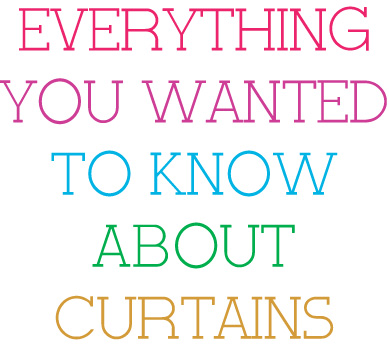
In my interior design practice, I see a lot of clients with curtain conundrums. Among them, one of my sisters-in-law, who called over the weekend. “How far off the floor should our curtains hang?” she asked, and I could tell we were in a bit of new house panic mode. “Should they touch the floor or should they be like an inch off the floor?” I get this question all the time, so here’s a little tutorial for you:
SHORT CURTAINS
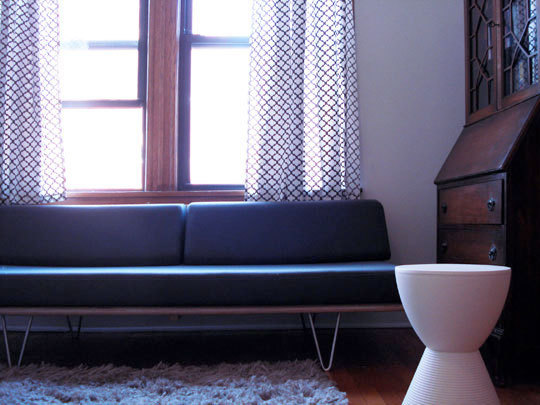
Via Apartment Therapy.
You can only rock this look if you’re going for a mid-century or retro vibe, or if we’re talking about the playroom or a child’s bedroom. To keep it modern, you need a strong window sill and the curtain hem should kiss the sill. Having the hem dangle below the sill comes off as grandma style–no offense to grandmas in the audience (Mom). If you’re going with short curtains, rods should be mounted just a few inches above the top of the window.
CAFE CURTAINS
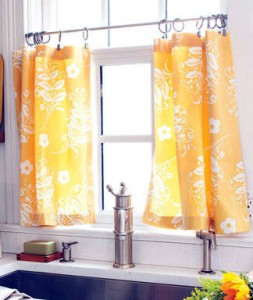
Via Calico Curtains
Cafe curtains are really only appropriate for casual spaces like kitchens, breakfast areas, and bathrooms. The key to pulling off good-looking cafe curtains is to use modern fabrics, hang them so that the top of the panels hit the middle of the window, and hems should kiss the window sill. If you don’t hit the middle just right, or if you try to go for some 2/3 or 3/4 proportion, it will look wonky, trust me. The beauty of the cafe curtain is that they give you both privacy and natural light. For best results, use a decorative tension rod and hang the curtains from clip rings.
84″ PANELS
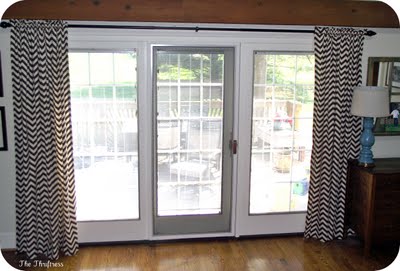
Via The Thriftress
84″ curtain panels are cheaper than their longer counterparts, so many people are tempted to get them. But with the increased ceiling height of new construction homes, there are rare instances where I’ll use this length of curtain anymore. They work well if you have vaulted ceilings and short walls, they’re pretty decent for dressing up a sliding glass door, and if you need to stretch your budget, by all means use an 84″ panel. As pictured above, you want your curtains to kiss the floor and mount your rod high enough that the window doesn’t peep out above the fabric. Read on to find out why I recommend longer lengths…
95+” PANELS
Taller curtains give you the benefit of accentuating vertical height. My rule of thumb is that I like rods to hit about six inches below the ceiling, with hems kissing the floor. For a more formal look, as pictured in the room above, let hems slightly bend at the floor. It’s not a full-on puddle, but gives you that hint of draped elegance in a grander space. “Puddling” your curtains (see below) gives you a really formal look, but beware of using this treatment if you have kids or pets, as they invite play and have a tendency to collect pet hair. They’re also a bit high-maintenance, with their routine need for fluffing.
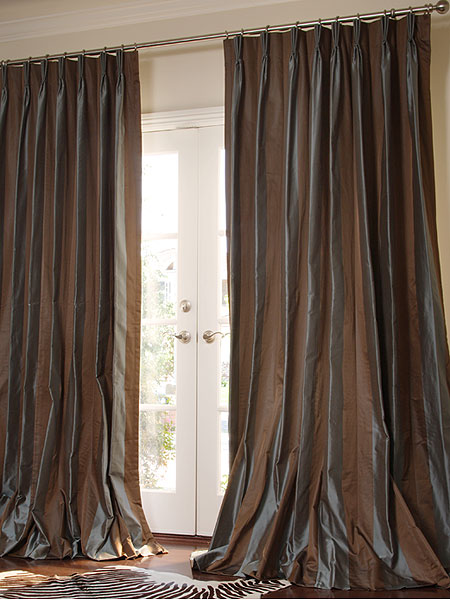
Via Sewinit
VALANCES
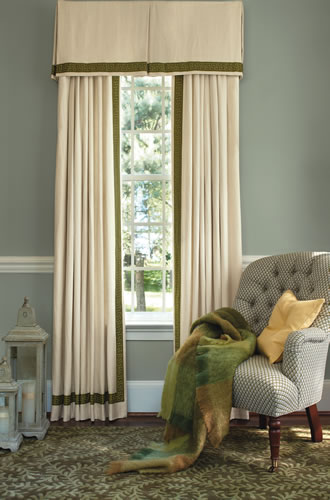
Via TexEuro Drapery Ltd
I’m not usually a fan of valances, but they can work in certain circumstances–and only if they’re tailored and modern, as pictured above. If you want to dress the windows in your breakfast area but are afraid of grubby hands using curtains as napkins, a little bit of tailored valance can give you that hit of pattern, color, or texture you need to soften a space. Layering them over curtains will give you a slightly more traditional look, and ups the ante in the formality department. As a general rule, the more pleats you have in your valance, the more traditional it will look.
CURTAIN TOPS
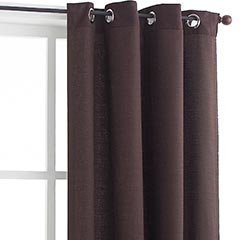
Via Pier 1
Grommets. My go-to curtain top is the grommet top. Why? They’re modern, they slide back and forth easily, and they save you a bit of money if you don’t have to buy clip rings.

Via Ikea
Rod Pockets. This type of curtain is annoying to use if you want your curtains open, just framing the window. They tend to sneak back to the center, minimizing your window exposure, and there’s no good way to keep them from creeping out. If you find some that are the perfect fabric to coordinate with your room, I recommend hanging them from clip rings, which makes them easier to stack left and right.

Via Pier 1
Tab Top. Just say no, unless you’re into that country look, and chances are good that if that’s your thing, you’re not reading this blog.
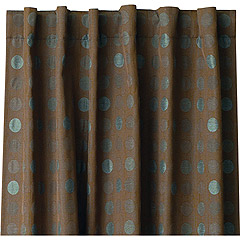
Via Pier 1
Tab Back. This type of panel gives you a minimal wave at the top of your curtains, versus the gathered look that rod pocket curtains have. While they’re easier to keep open than rod pocket curtains, the fabric tabs will still have a tendency to creep toward the center.
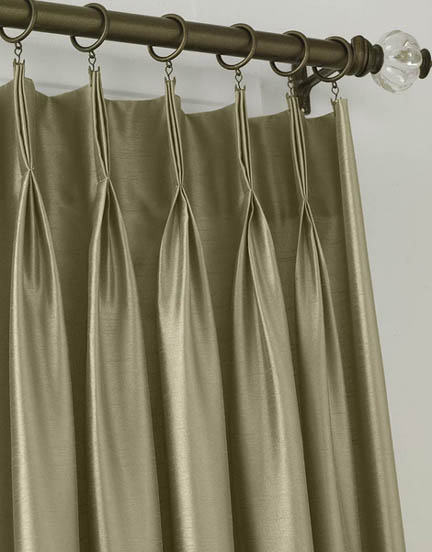
Via Curtainworks
Pleated Tops. A more formal look, you’ll need to add curtain hooks to the back of pleated curtains and hang them from curtain rings. I’m not a fan of using clip rings with pleated curtains, as the exposed clips mar the formality of the pleats.

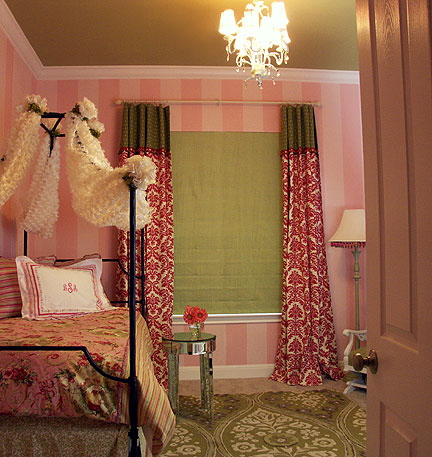
Great information! I still need to go to Ikea to buy curtains, but I’m hung up (no pun intended) on the 95″ length. My walls are not that high. So that means getting out the sewing machine and doing some hemming. And hawing…
I bet your mom has never had any of those “dangling-below-the-sill grandma-style curtains” in her house! Probably one of the reasons you’re so good at what you do.:)
THANK YOU for putting this information on your blog. I have been debating curtains/no for a while now and I feel like I can move forward with this in mind.
You are so good at what you do…